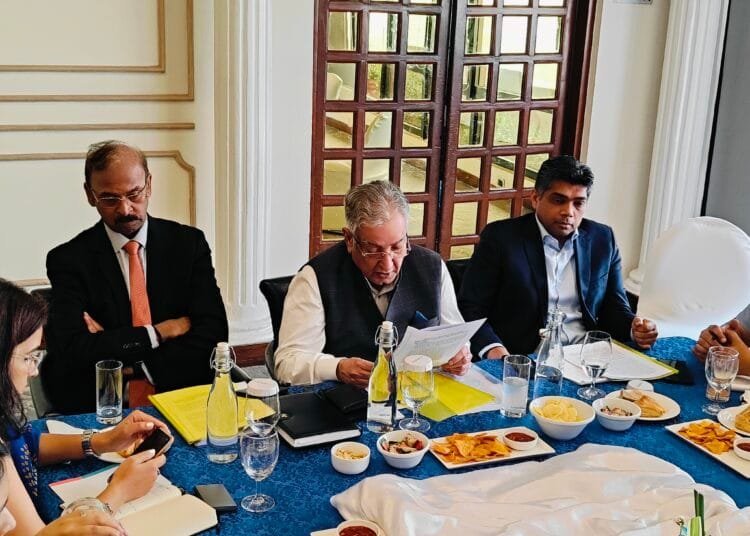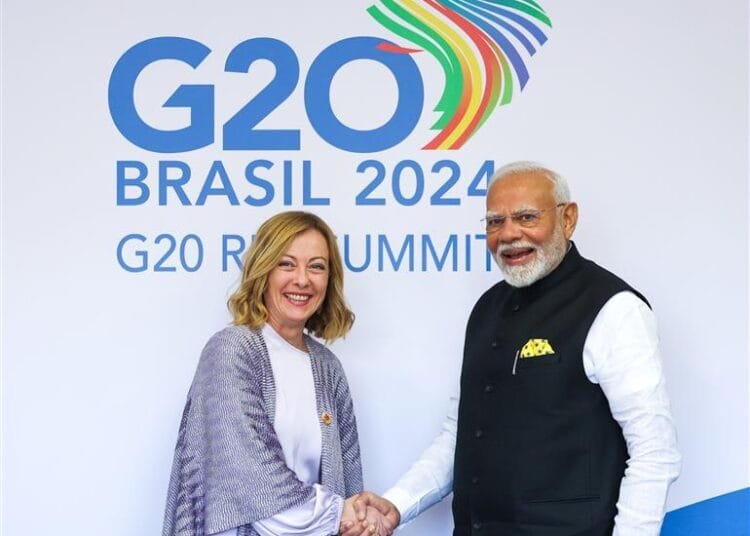India lost market share of labour-intensive products to competitors
The Federation of Indian Export Organizations (FIEO) President Ashwani Kumar has acknowledged challenges in achieving US$2 trillion export target by 2030 with a CAGR of 12.7% https://fieo.org/ .
“We are looking at an ambitious target of US$ 2 trillion of exports by 2030 requiring a CAGR 12.7%, which is challenging but within the realm of reach looking into the enabling and supportive eco-systems being developed by the government,” he said on 16 May during interaction with media on prospects in global markets.
Indian exports (Goods & Services) have done “exceedingly well between 2017-18 to 2023-24 moving from US$ 478 bn to US$ 778 bn with a CAGR of 8.5% despite global headwinds and covid”.
Exports of technology-drive sectors such as machinery, electrical and electronic, auto mobile, pharma, biotechnology etc, he noted https://pharmaceuticals.gov.in/ .
“This will get further push once the Production Linked Incentives- (PLI) related sectors start producing in the country, as a significant portion of production will find its way to the global market.”
In the past 4 years, Indian exports growth in all the above sectors http://commerce.gov.in , outpaced global import growth and, and thus the country’s modest share of global trade has improved.
Globally, the Machinery sector experienced a Compound Annual Growth Rate (CAGR) of 4% during 2019-2022, whereas India showcased a more robust growth of 7% in this sector.
Similarly, in the realm of electrical and electronics, the global growth reached a CAGR of 7%, contributing to a market size of approximately US$3.5 trillion.
Remarkably, India’s exports in these sectors recorded a CAGR of about 20%, predominantly propelled by the mobile phone exports.
In terms of the Indian Medical and Diagnostic equipment sector’s performance, it has showcased exceptional achievement.
While the global sector recorded a CAGR of 3%, India’s exports demonstrated remarkable expansion at 9% over the same years.
This success is attributed to factors such as the influx of Foreign Direct Investment (FDI) into the sector.
“Our bigger concern is exports from labour-intensive sector such as knitted and woven garments, made-ups, footwear, gem and jewellery. We lost the market to our competitors in knitted garment sectors,” Kumar said.
Comparatively, India added US$200 million to its exports during calendar year 2019 to 2022 whereas in the same period Bangladesh added US$10 billion, he elaborated on the loss of market share. In the footwear sector, while global imports grew at a CAGR of 5%, India’s exports contracted. Bangladesh exports grew by US$750 million in the same period.
“We need to look into the global demand and accordingly, modify our manufacturing. The focus on skilling is still lacking as per piece production in many segments is much less as compared to Vietnam, Indonesia, Bangladesh, Cambodia etc,” he underscored.
Further, he explained – One of the structural issues of Indian exports is a problem of 70:30 as against 30:70. 70% of Indian exports are targeted towards 30% of global imports while 30% of exports are meant for 70% of global imports.
“Global imports are dominated by technology led sectors https://www.bengalurutechsummit.com/ and we have to increase our exports in these segments for which the Production Linked Incentive (PLI) scheme will come quite handy,” he believes.
The labour-intensive sectors will not only help in providing a jump in exports but also need to be pushed to create more jobs in the country.
He pointed out that the share of export credit in the net bank credit is extremely low and not commensurate with the share of India’s exports in the GDP, which is over 20%.
The demand for the credit has gone up with rising inflation, high commodity prices and abnormal increase in sea as well as air freight.
With the longer voyage time, on account of diversion of cargo through The Cape of Good Hope https://africacenter.org/, coupled with slow offtake from the shelves, the buyers are also taking longer time to remit export proceeds necessitating higher credit for a longer period. This requires additional flow at most competitive rates, he added.
Indian MSMEs https://msme.gov.in/ lack marketing exposure and the current schemes to support the same have grossly inadequate budgets. FIEO puts focus on aggressive marketing for visibility of our exquisite products and services.
“We are proposing to create an Export Development Fund (EDF), designed to assist Indian MSME, Exporters, Export Promotion Councils, FIEO, Commodity Boards, Trade Promotion Organisations etc. in undertaking export promotional activities,” he informed.
The Export Development Fund http://sbi.co.in will subsume the activities currently under the ambit of MDA and MAI scheme and will add other activities to make it more comprehensive scheme.
He also called for developing an Indian Shipping Line http://shipindia.com of global repute. India’s outward remittance on transport services is increasing with rising exports. “We remitted over US$80 billion as transport service charge in 2021.”
As the country moves towards the goal of US$1 trillion, this will touch US$200 billion by 2030. A 25% share by the Indian Shipping Line can save US$50 billion year on year basis http://shipmin.gov.in .
The Indian Private sector may be engaged to develop such Shipping Lines. This will also reduce arm twisting by foreign Shipping Lines http://maersk.com particularly of our MSMEs, underlined Kumar.
Unfortunately, India’s spending on R&D (less than 1% of GDP) is well below that in major nations such as China (2.43% of GDP) http://globaltimes.cn , the US (3.46% of GDP), Korea https://koreapro.org/ (4.93% of GDP) and Israel (5.56% of GDP) .
Utilisation of FTAs particularly with UAE https://www.abudhabichamber.ae/ , Australia https://www.asx.com.au/ and EFTA http://eurochambres.eu will grow helping exports. The labour-intensive sectors like Apparel, Footwear and Gems & Jewellery, which suffered double digit decline in 2023-24, are set to post better results.
“With a better monsoon forecast, we expect some of the restrictions on cereal exports may also be lifted. In the given scenario, we are looking for merchandise exports between US$ 500-510 billion in 2024-25 https://www.wto.org/,” he elaborated.
“In the services, we expect exports to be around US$390-$400 billion for the current fiscal. Business services like Engineering, R&D, Advertising Services, Business & Management Consultancy are likely to do extremely well https://www.worldbank.org/en/home .”
Given a consistent decline in credit to exporters during recent times, as also the importance accorded to finance in driving export growth, the RBI http://rbi.org.in may consider prescribing a sub-target for export credit within the existing 40% target for priority sector lending (PSL) as has been done for MSME with 7.5% sub-target, within the 40% of PSL, he said. fiinews.com










